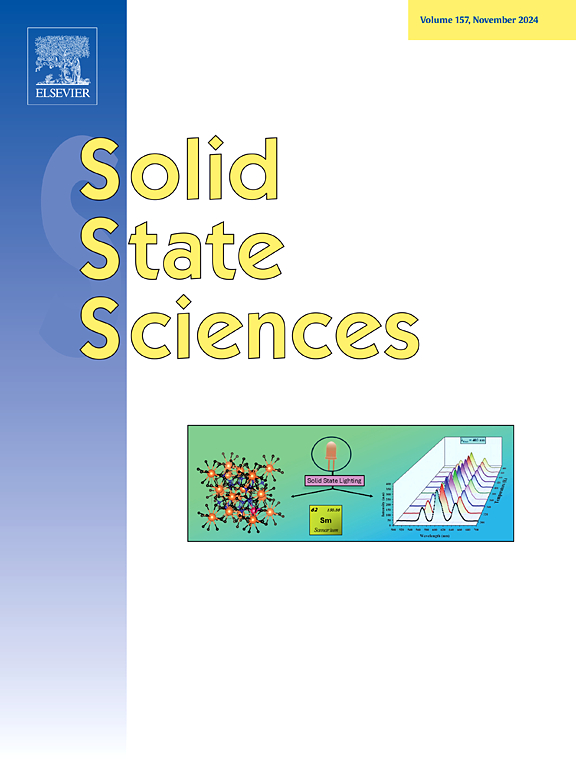高分散单原子铁在n掺杂生物炭上通过活化过氧单硫酸盐高效降解有机污染物
IF 3.4
3区 化学
Q2 CHEMISTRY, INORGANIC & NUCLEAR
引用次数: 0
摘要
以丝瓜海绵炭为原料合成Fe-N-C催化剂,并应用于过氧单硫酸盐(PMS)活化降解有机污染物。该催化剂在N-C骨架上具有高度分散的单原子铁,在较宽的pH范围内表现出优异的苯酚降解活性。Fe的加入显著提高了苯酚的催化性能,使用0.5 mmol L - 1的PMS和0.2 g L - 1的催化剂,在20 mg L - 1的浓度下,在10 min内实现了苯酚的快速降解。电子顺磁共振(EPR)和活性氧猝灭实验发现,单线态氧(1O2)和超氧自由基(O2•-)是主要的活性氧,其中单线态氧起关键作用。结果表明,Fe-Nx结构是促进1O2生成的活性位点,从而提高了Fe-N-C材料的催化活性。该催化剂还能有效处理罗丹明B和克里巴唑等污染物,表明其在环境修复方面的潜力。Fe-N-C的合成方法适用于其他过渡金属,如Mn, Co, Ni, Cu和Zn,为开发高效耐用的M-N-C催化剂提供了有价值的见解。本文章由计算机程序翻译,如有差异,请以英文原文为准。

High-dispersed single-atom Fe on N-doped biochar for efficient degradation of organic contaminants by activating peroxymonosulfate
The Fe-N-C catalyst was synthesized using loofah sponge-derived carbon and applied for peroxymonosulfate (PMS) activation to degrade organic pollutants. The catalyst, featuring highly dispersed single-atom Fe on the N-C framework, showed outstanding activity for phenol degradation across a wide pH range. The incorporation of Fe significantly boosted the catalytic performance, achieving rapid degradation of phenol at 20 mg L−1 within 10 min, using 0.5 mmol L‒1 of PMS and 0.2 g L−1 of catalyst. Electron paramagnetic resonance (EPR) and reactive oxygen quenching experiments identified the singlet oxygen (1O2) and superoxide radical (O2•‒) as the main reactive oxygen species, with the former playing a key role. It has been demonstrated that the Fe-Nx structures were the active sites that facilitated the generation of 1O2, thereby enhancing the catalytic activity of the Fe-N-C materials. The catalyst also effectively addressed pollutants like Rhodamine B and climbazole, indicating its potential for environmental remediation. The synthesis approach for Fe-N-C is applicable to other transition metals, such as Mn, Co, Ni, Cu, and Zn, providing valuable insights for the development of highly efficient and durable M-N-C catalysts.
求助全文
通过发布文献求助,成功后即可免费获取论文全文。
去求助
来源期刊

Solid State Sciences
化学-无机化学与核化学
CiteScore
6.60
自引率
2.90%
发文量
214
审稿时长
27 days
期刊介绍:
Solid State Sciences is the journal for researchers from the broad solid state chemistry and physics community. It publishes key articles on all aspects of solid state synthesis, structure-property relationships, theory and functionalities, in relation with experiments.
Key topics for stand-alone papers and special issues:
-Novel ways of synthesis, inorganic functional materials, including porous and glassy materials, hybrid organic-inorganic compounds and nanomaterials
-Physical properties, emphasizing but not limited to the electrical, magnetical and optical features
-Materials related to information technology and energy and environmental sciences.
The journal publishes feature articles from experts in the field upon invitation.
Solid State Sciences - your gateway to energy-related materials.
 求助内容:
求助内容: 应助结果提醒方式:
应助结果提醒方式:


